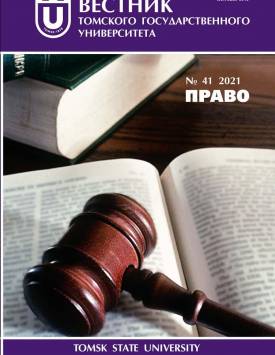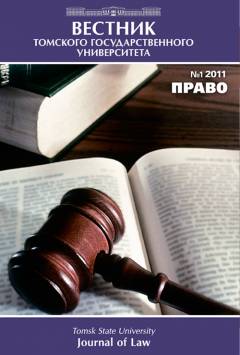Legal risks of introducing the digital ruble
The prospects of introducing digital means of payment based on the latest advances of information technology have been a subject of active discussion lately. The emergence of cryptocurrencies that are not issued by or on behalf of the state, as well as non-state-owned digital payment services, has posed a serious challenge to the existing monetary system. The first reaction of regulators (mainly, central banks) was to take prohibitive measures. However, it is now understood that the benefits of digital money can also be put to a good use by the state. A number of projects aimed at creating a central bank digital currency (CBDC) have emerged in various jurisdictions. These projects should, according to their creators, combine the advantages of cutting-edge financial technology with the achievement of the monetary policy objectives. The first project of this kind was Ecuador's Dinero Electronico, launched in 2014. Similar developments are underway in a number of other countries and regions (Sweden, South Korea, Canada, China, Norway, the UK, the Eurozone etc.). Despite the ever-increasing interest in CBDCs, the technology is still in a nascent state. The Bank of Russia has also drafted a Digital Ruble Concept, which was published in April 2021. According to the Concept, the digital ruble will be the third form of money, along with non-cash accounts and regular cash. The Concept utilizes the so-called two-tier retail (or “hybrid”) CBDC model, based on the principle that the CBDC is issued by the Bank of Russia, which opens accounts for the Federal Treasury and financial institutions; these institutions are, in turn, responsible for client interaction and account opening. However, clients’ accounts are not reflected on the balance sheets of the financial institutions and are Central Bank’s liability. Foreign researchers point to a significant number of new risks as well as legal issues that need to be addressed when developing a CBDC system: AML/CFT enforcement, dealing with fraudulent and erroneous transactions, taxation and liens, as well as personal data protection and privacy concerns. Another challenge for all jurisdictions is CBDC's status as legal tender, since its universal acceptance might not be possible. Ensuring privacy is also of utmost importance, especially when smart contracts are involved. As far as the Russian legal system is concerned, the introduction of the digital ruble will naturally entail a large-scale revision of non-cash payments regulation, concrete definition of the rules concerning the distribution of risks in fraudulent and erroneous transactions, developing new rules for enforcement and bankruptcy proceedings, etc. At the same time, it is unlikely that the provisions of the Civil Code of the Russian Federation concerning the objects of civil rights will require significant change, as digital rubles can be classified as noncash funds (as far as this concept is interpreted broadly).
Keywords
money,
digital assets,
digital ruble,
central bank digital currency,
legal tender,
means of payment,
risksAuthors
| Medvedeva Tatyana M. | Private Law Research Center under the President of the Russian Federation named after S.S. Alekseev | snow100@mail.ru |
| Novoselova Ludmila A. | Kutafin Moscow State Law University | lab.kip@msal.ru |
| Novoselov Mikhail A. | JSC “Otkrytie Broker” | novoselov.mikhailo@gmail.com |
Всего: 3
References
Global Anti-Money Laundering Survey 2014 // KPMG. 2014. 80 p. URL: https://assets.kpmg/content/dam/kpmg/pdf/2015/03/global-anti-money-laundering-survey-latest.pdf (accessed: 21.04.2021).
E-krona project, report 2, October 2018 // Sveriges Riksbank. 2018. 52 p.
Kumhof M., Noone C. Central bank digital currencies - design principles and balance sheet implications // Staff Working Paper No. 725. Bank of England. 2018. 54 p.
Bindseil U. Tiered CBDC and the Financial System // ECB Working Paper No. 2351. European Central Bank. January 2020. 42 p.
Ward O., Rochemont S. Understanding Central Bank Digital Currencies (CBDC): an addendum to “A Cashless Society - Benefits, Risks and Issues (Interim paper)”, March 2019 // Institute and Faculty of Actuaries. 2019. 52 p.
Agur I. Central Bank Digital Currencies: an overview of pros and cons // Do We Need Central Bank Digital Currency? Economics, Technology and Institutions / E. Gnan, D. Mas-ciandaro (eds.); Societe Universitaire Europeenne de Recherches Financieres Conference Proceedings. 2018. P. 82-90.
Auer R., Boehme R. CBDC architectures, the financial system, and the central bank of the future // VoxEU.org - CEPR’s policy portal. URL: https://voxeu.org/article/cbdc-architectures-financial-system-and-central-bank-future (accessed: 21.04.2021).
Davis C.B. Sand Dollar: Driving Financial Inclusion and FinTech Innovation In the Midst of COVID-19 // I Meeting of Heads of Financial Market Infrastructures. September 30 -October 2, 2020, Center for Latin American Monetary Studies (CEMLA). 2020. URL: https://www.cemla.org/actividades/2020-fmal/2020-09-i-meeting-market-infrastructures/2020-09-i-meeting-market-infrastructures-2.pdf (accessed: 21.04.2021).
Laboure M. The steps required to promote digital currencies // Konzept # 19: What we must do to rebuild. Deutsche Bank Research. 2020. P. 49-52. URL: https://tinyurl.com/dbkonzept19 (accessed: 21.04.2021).
Project Sand Dollar: A Bahamas Payments System Modernisation Initiative, 24 December, 2019 // Central Bank of the Bahamas. Nassau, 2019. 33 p. URL: https://cdn.centralbankbahamas.com/documents/2019-12-25-02-18-11-Project-Sanddollar.pdf (accessed: 21.04.2021).
Auer R., Cornelli G., Frost J. Rise of the Central Bank Digital Currencies: Drivers, Approaches and Technologies // CEPR Discussion Paper No. DP15363. Centre for Economic Policy Research. 2020. 44 p.
Е-krona pilot Phase 1, April 2021 // Sveriges Riksbank. 2021. 21 p.
E-krona project, report 1, September 2017 // Sveriges Riksbank. 2017. 44 p.
Allen S. et al. Design Choices for Central Bank Digital Currency: Policy and Technical Considerations // Global Economy & Development Working Paper 140. Brookings Institution. 2020. 110 p.
Auer R., Boehme R. (a). The technology of retail central bank digital currency // BIS Quarterly Review. March 2020. 16 p.
Central Bank Digital Currency Policy-Maker Toolkit: Insight Report, January 2020 // World Economic Forum Centre for the Fourth Industrial Revolution. 2020. 28 p.
Agur I., Ari A., Dell'Ariccia, G. Designing Central Bank Digital Currencies // IMF Working Paper No. 19/252. IMF Research Department. 2020. 39 p.
Adrian T., Mancini Griffoli A. The rise of digital money // IMF Fintech Notes, July 2019. Washington, DC : International Monetary Fund, 2019.
Bossu W. et al. Legal Aspects of Central Bank Digital Currency: Central Bank and Monetary Law Considerations // IMF Working Paper WP/20/254. IMF Legal Department. 2020. 51 p.
LBCOIN - About the project // Lietuvos Bankas. URL: https://lbcoin.lb.lt/fk046 (accessed: 21.04.2021)
Концепция цифрового рубля, апрель 2021 / Центральный Банк Российской Федерации. М., 2021. 30 с.
Цифровой рубль : доклад для общественных консультаций, октябрь 2020 / Центральный Банк Российской Федерации. М., 2020. 47 с.
Kahn C.M. How are payment accounts special? // Payments Innovation Symposium. October 12-13, 2016, Federal Reserve Bank of Chicago. 2016
Bergara M., Ponce J. Central bank digital currency: the Uruguayan e-Peso case // Do We Need Central Bank Digital Currency? Economics, Technology and Institutions / E. Gnan, D. Masciandaro (eds.); Societe Universitaire Europeenne de Recherches Financieres Conference Proceedings. 2018. P. 82-90.
Nabilou H. Testing the waters of the Rubicon: the European Central Bank and central bank digital currencies // Journal of Banking Regulation. 2020. Vol. 21. P. 299-314.
Pfister C. Central Bank Digital Currency: A Primer // SUERF Policy Note, is/ No 143. SUERF - The European Money and Finance Forum. 2020. 11 p.
Mancini-Griffoli T. et al. Casting Light on Central Bank Digital Currency // IMF Staff Discussion Note SDN/18/08. 2018. 39 p.
Лунц Л.А. Деньги и денежные обязательства в гражданском праве. М. : Статут, 2004. 350 с.
Финансовое право в условиях развития цифровой экономики / К.Т. Анисина, Б.Г. Бадмаев, И.В. Бит-Шабо и др.; под ред. И.А. Цинделиани. М. : Проспект, 2019. 320 с.
Лиджуёль ханын чхонъджэ «собихвебок додё.. мульгасансын кокджон анхэ» (Ли Джу Ёль: «Восстановление потребления идет медленно, об инфляции я не беспокоюсь») // Монитудеи («Деньги сегодня»). 2021. 25 февр. URL: https://news.mt.co.kr/mtview.php?no=2021022512521030340&VNC_T (дата обращения: 21.04.2021).

